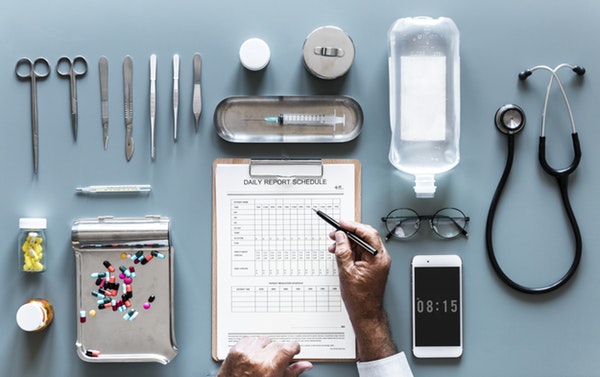
In today’s world, data drives just about every facet of our lives. That’s to our advantage because data is objective and can paint a picture we can’t see with our subjective minds.
For decades, data scientists have been collecting and analyzing data in nearly every industry, making accurate predictions for the future. These data-driven predictions are also responsible for many of today’s technological advances that improve the quality of life.
The healthcare industry especially thrives on the processing of this data. Healthcare functions primarily as a preventative, identifying potential concerns before they become serious issues. In partnership with some of the latest technological innovations, it’s now easier for hospitals to collect data, study patient outcomes, and improve treatment protocols. It also allows patients to play an active role in their own care.
What healthcare was like before we had accurate data
Early healthcare providers lacked the technology to peer into bodily systems to find out what was going on behind the scenes. Unless a visible reaction occurred, medicine was considered safe as long as you felt good and didn’t die.
For example, for hundreds of years, morphine was used to calm infants and help relieve the pain of teething. Cocaine drops treated toothaches. Heroin tablets were used to treat asthma, and opium was used to control coughing and diarrhea. Opium was considered an all-purpose drug – “God’s own medicine,” according to one medical historian from the University of Washington School of Medicine.
Today, we understand how cocaine, heroin, and opium negatively affect the brain and central nervous system. We have enough data to know that none of these drugs are cures. Although morphine is still used for pain relief, it’s not given to babies and we understand it only masks the pain.
Personalized healthcare is the future now
Well-known medical universities like Rush are already on top of personalized healthcare. Rush Medical University is in collaboration with tech firm Tempus to expand their cancer biorepository, a move that will make treating cancer exponentially more effective in the future.
Rush already processes more than 1,000 specimens annually. Tempus will house the expanded biorepository at its headquarters in Chicago.
Collecting data on cancer has proven been beneficial because two people can have the same type of cancer, but specific genetic markers determine which medication they respond to.
The goal is a holistic view
“Text, image, audio and video data have long been analyzed in a vacuum, typically by a human being,” Brandon Purcell told Healthcare IT News. “Solutions like Watson Health that are able to diagnose results from medical images are just the start of a trend in healthcare toward using deep learning to analyze unstructured data.”
Purcell explains the importance of combining data from all sources in order to gain a 360-degree holistic view of a patient’s situation.
Apple is bridging the gap between patient and provider
When someone visits a hospital, everything in their file is added to their Electronic Health Record (EHR). That information is available to patients but must be requested or accessed through an account on the healthcare provider’s website. Not every healthcare provider or hospital offers patients online access to their own records. Creating this type of access is costly, time-consuming, and it’s not always user-friendly. That’s why Apple stepped in and launched an application called “Health Records.”
The goal is simple: to funnel a patient’s disparate health records from various sources (like labs, hospitals, and clinics) into one accessible platform on their iOS device. The Department of Health and Human Services has been pushing to provide all patients with electronic access to their health records, and this application could be the bridge.
Wearable technology is helping individuals collect their own data
Patients can purchase devices that allow them to monitor their own health. Everyone knows about fitness trackers, but there are far more impressive devices – like this wearable electrocardiogram monitor. The device records more than 20 million data points and streams that data to a smartphone.
The QuardioCore chest strap continuously measures ECG, heart rate, heart rate variability, respiratory rate, and body temperature. This is a game changer for people who want to monitor their heart health with data. Individuals who agree to allow their data to be collected could prove useful for others in the future.
Access to data empowers patients to play an active role in their own care
As patients gain access to their own records as well as the results from processed data, their role will shift from a passive patient to an active decision maker, making healthcare a truly personalized experience.
